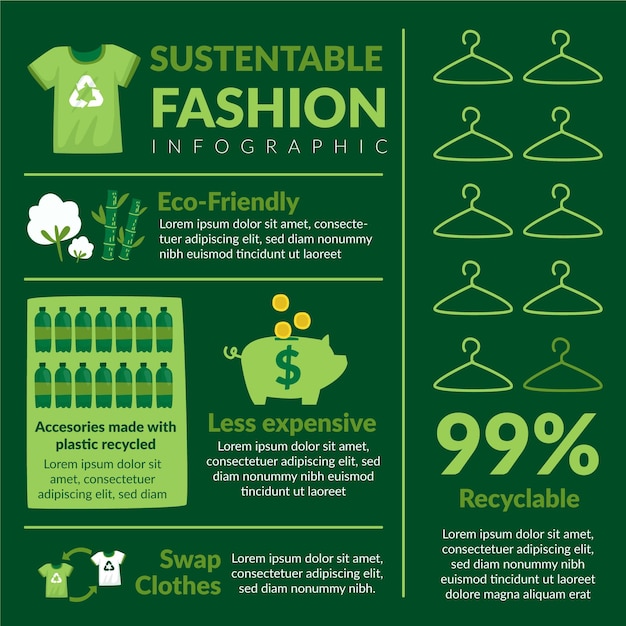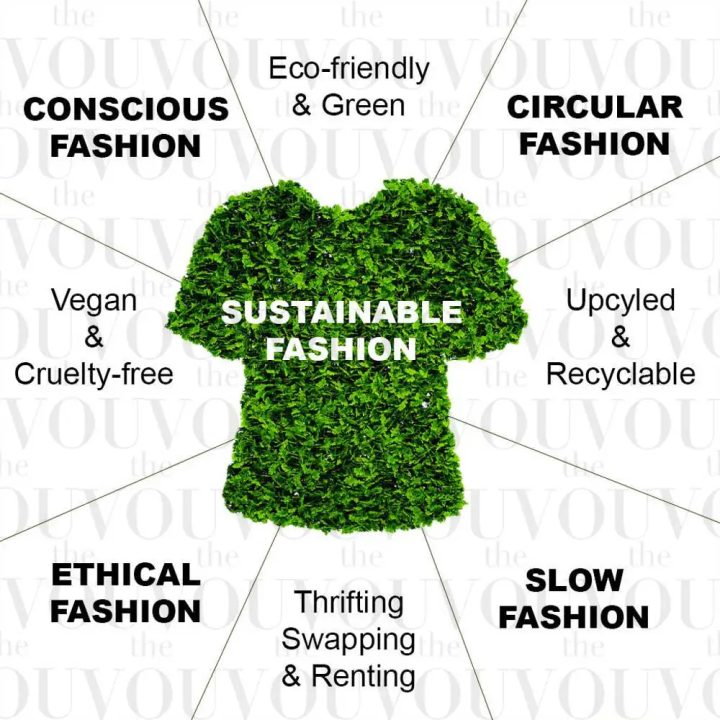Cape Town Sustainable Fashion Week: Highlighting Environment-friendly Innovations
Cape Town Sustainable Fashion Week: Highlighting Environment-friendly Innovations
Blog Article
Stay Ahead of the Curve by Checking Out Ingenious Style Trends
In an industry as dynamic as fashion, staying ahead includes greater than just adhering to present fads-- it demands an expedition of technology. Smart textiles, for example, are transforming garments into practical work of arts, while 3D printing is transforming design processes with its customizable, waste-reducing capabilities. As sustainability ends up being a foundation, technologies like eco-friendly materials and circular fashion techniques are reshaping environmental responsibility - Cape Town Sustainable Fashion. In addition, the merging of modern technology and style proclaims a brand-new period of customer involvement. Just how, after that, can these emerging trends redefine the future of fashion, and what ramifications do they hold for brands seeking to thrive in this evolving landscape?

Accepting Smart Textiles
Over the last few years, the fashion business has observed a transformative shift with the integration of smart textiles, a sophisticated innovation that mixes technology with material. This development represents not just a blend of appearances and capability yet also a substantial jump in the direction of sustainability and customization in fashion. Smart fabrics, additionally known as e-textiles, embed innovative electronic devices such as sensing units and conductive threads within the fabric, allowing garments to communicate with the setting or the user.
These textiles are designed to monitor physiological criteria, such as heart rate or body temperature, offering real-time health and wellness analytics. Past wellness applications, clever textiles are additionally being made use of for flexible apparel, which can change color or pattern in response to ecological stimuli, hence supplying a vibrant fashion experience.
Moreover, the development of energy-harvesting fabrics that produce power from movement or sunshine is leading the way for self-dependent wearable technology. This innovation is interesting ecologically conscious customers and designers intending to minimize the eco-friendly impact of fashion. As research study and development in this area advancement, wise fabrics are expected to become progressively prevalent, improving the landscape of contemporary style with their multifunctional abilities.
The Surge of 3D Printing
Reinventing the manufacturing landscape, 3D printing has become a game-changer in the fashion market. This sophisticated innovation has enabled designers to press the limits of creative thinking, generating elaborate and tailored garments that were previously unbelievable. By leveraging digital style and additive production, 3D printing facilitates the development of complex geometries and patterns, permitting designers to explore new appearances and frameworks.
A noteworthy benefit of 3D printing in style is its capability to generate on-demand, reducing waste and decreasing stock demands. This performance not only optimizes production processes but also permits fast prototyping, allowing designers to bring their visions to life in a much shorter duration. In addition, 3D printing sustains modification somewhat unequaled by standard approaches, offering customized fits and one-of-a-kind styles tailored to private consumer choices.
The rise of 3D printing has also democratized style, making it obtainable to arising developers who can now fabricate high-quality items without considerable monetary investment in standard production framework. As modern technology remains to breakthrough, the apparel industry is positioned to harness the full potential of 3D printing, exploring brand-new materials and techniques that will certainly redefine just how fashion is conceived and produced.
Sustainable Style Technologies
As the garment industry comes to grips with the pushing need for ecological responsibility, sustainable fashion technologies have actually arised at the leading edge of transformative change. The growing awareness of eco-friendly effect has sustained a change towards more eco-conscious techniques and products. Developers and brands are now read what he said prioritizing sustainability, incorporating methods that lessen waste and lower carbon footprints.
One considerable advancement is the surge of circular style, which emphasizes recycling and upcycling to extend the lifecycle of garments. This strategy not just reduces waste however likewise urges consumers to take on a more conscious approach to garments intake. In addition, making use of lasting products, such as natural cotton, hemp, and recycled polyester, has actually acquired traction. These products require much less water and energy during production, dramatically minimizing ecological impact.
One more innovation exists in the fostering of cutting-edge dyeing strategies that use natural dyes or waterless procedures, consequently lowering the substantial quantities of water and chemicals generally made use of in fabric dyeing. In addition, developments in biotechnology have caused the production of lab-grown natural leather and materials, using cruelty-free and eco friendly choices to traditional products. Via these introducing efforts, the fashion business is making significant strides towards a more sustainable future.

Tech-Integrated Apparel
Tech-integrated garments represents a cutting-edge blend of fashion and innovation, improving just how individuals engage with their clothing. This ingenious domain is noted by the incorporation of smart textiles and embedded digital elements, boosting both capability and visual appeal. From physical fitness trackers embedded in sportswear to heated coats controlled via smart device applications, tech-integrated apparel supplies customers unprecedented benefit and versatility.
Pioneering brand names are driving this fad, concentrating on producing garments that react to environmental stimuli or customer commands. As an example, some Recommended Site garments can change color or pattern in feedback to temperature level changes, while others include biometric sensors to keep an eye on wellness metrics like heart price or tension degrees. The smooth integration of innovation right into textiles additionally encompasses ecological sustainability, with initiatives to develop self-cleaning fabrics or garments that adapt to weather problems, therefore minimizing the requirement for several layers.
In addition, the development of wearable innovation is not simply restricted to apparel yet encompasses devices like watches and eyewear, further widening the scope of tech-integrated fashion. As the industry continues to introduce, the possibility for modification and customization in clothing expands, offering customers unique, tech-enhanced style experiences that provide to their specific needs and preferences.
Future of Virtual Style
Recently, the future of digital fashion has emerged as a transformative force within the sector, leveraging improvements in digital technology to redefine how style is produced, experienced, and consumed. By integrating increased fact (AR), virtual reality (VIRTUAL REALITY), and 3D layout devices, developers can currently craft immersive and interactive experiences that go beyond typical fashion boundaries. Virtual fashion permits Click Here the production of garments that exist solely in digital atmospheres, providing countless possibilities for technology without the restrictions of physical production.
This digital change not just provides possibilities for innovative expression however likewise addresses sustainability problems intrinsic in traditional style techniques. Cape Town Sustainable Fashion. By removing the need for physical resources, digital style lowers waste and decreases carbon footprints. Additionally, the rise of digital style lines up with the increasing customer demand for customized and unique experiences, as digital garments can be tailored and tailored to individual choices effortlessly

Final Thought
The garment industry's future lies in the integration of lasting methods and innovative modern technologies - Cape Town Sustainable Fashion. Smart textiles and tech-integrated garments are boosting capability, while 3D printing provides possibilities for personalization and waste reduction. Sustainable style, with round methods and environment-friendly products, shows a commitment to ecological stewardship. Additionally, digital style is positioned to redefine customer communications. Adapting to these patterns is necessary for brand names looking for to remain affordable and pertinent in this swiftly developing landscape.
In recent years, the fashion industry has witnessed a transformative change with the assimilation of clever textiles, an innovative development that mixes technology with fabric.As the fashion industry grapples with the pushing requirement for environmental obligation, lasting style innovations have actually arised at the center of transformative adjustment.In current years, the future of virtual style has actually arised as a transformative pressure within the sector, leveraging improvements in digital innovation to redefine exactly how fashion is produced, experienced, and consumed. The surge of digital fashion lines up with the enhancing consumer need for tailored and unique experiences, as virtual garments can be customized and customized to specific choices with simplicity.
The fashion sector's future lies in the integration of innovative modern technologies and lasting methods.
Report this page